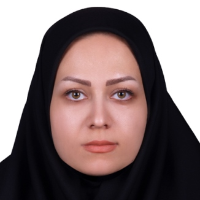Effect of Substrates on Some Morphological and Physiological Traits of Two Basil Cultivars in Aquaponic System
The aquaponic cultivation system, which is a combination of aquaculture and hydroponic systems, is among the novel cultivation systems. In an aquaponics system, it is possible to simultaneously produce aquatic animals and vegetables. One of the most important components of each soil-free system is the selection of a suitable substrate. This substrate makes water and nutrients available for the root system and also contributes to the proper establishment of the plant. It must also be non-toxic and should not impair plant growth. Another point to consider in the selection of the substrate is its cost and availability, as the transport process will increase the costs of initial establishments in such systems. Amon vegetables, basil is a special crop with a short growing season and high economic value, which is also highly suitable for an aquaponic system. The present study was carried out with the aim of comparing some morphological and physiological traits of 'purple' and 'green' basil cultivars in different substrates in the aquaponics system.
The present study was conducted as a factorial based on a completely randomized design with three replicates in a research greenhouse located in Zanjan city. The experimental treatments included 10 substrates (cocopeat, perlite, sand, pumice, cocopeat + perlite (50:50), cocopeat + pumice (50:50), cocopeat + sand (50:50), pumice + sand (50:50), pumice + perlite (50:50) and sand + perlite (50:50)) and two basil cultivars ('green' and pueple). The aquaponic system in this study comprised of a 300 L fish tank containing 100 common carps. The fish were nurtured twice a day with powdered fish feed containing protein, carbohydrates, lipids, vitamins, etc. The water in the fish tank was filtered and fish wastes were removed in a filtration tank before entering the aquaponics medium to be used by the plant root system. Chemical properties of the fish water including pH, and nitrite (NO2), nitrate (NO3), and ammonium (NH4) concentrations were controlled using diagnostic kits on a weekly basis. At the flowering stage, various traits including plant height, dry and fresh weights of roots and shoots, number of nods, number of leaves, and leaf area were measured to investigate the growth of basil plants. Also, physio-phytochemical traits including the contents of chlorophyll a, chlorophyll b, total chlorophyll, carotenoid and anthocyanin were measured. Analysis of variance of the data was carried out using the SAS software. Also, the least significant difference method (LSD) was used for the comparison of means.
According to the results, the greatest plant height (60.57 cm), shoot fresh weight (90.57 g), root fresh weight (22.33 g), and leaf number (133.99) belonged to purple basil and the lowest value for these traits were observed in green basil cultivar. The results of the mean comparison for the morphological traits indicate the superiority of perlite + cocopeat compared with the other substrates. Basil plants cultivated in sand substrate exhibited the lowest values for growth traits compared to other treatments. Analysis of the interaction effect between substrate and cultivar revealed that the highest number of nodes (10.5), dry weight of shoots (25.17 g), dry weight of roots (4.67 g), and leaf area (17.13 cm2) were observed in the perlite + cocopeat substrate with purple basil. Conversely, the lowest values for these traits (5.23, 12.93 g, 1.46 g, and 11.03 cm2, respectively) were recorded in the silt substrate with the green basil cultivar. The results related to physio-phytochemical traits showed that the highest content of chlorophyll a (1.57 mg g -1 FW) and total chlorophyll (2.1 mg g -1 FW) were observed in the perlite + cocopeat substrate and green basil. Also, anthocyanin content was the highest (0.17 mg g -1 FW) when the purple cultivar was grown in the perlite + c cocopeat substrate. The lowest content of chlorophyll a and total chlorophyll were recorded in the sand substrate and purple cultivar with 0.96 and 1.17 mg g -1 FW, respectively. Also, the lowest content of anthocyanin was related to the green basil cultivar with 0.058 mg g -1 FW.
Overall, the 'purple' cultivar of basil was superior to the 'green' cultivar regarding most traits in the aquaponic system. Also, substrates containing perlite and cocopeat led to better results compared with the other substrates, whereas the basil plants grown in sand and pumice had lower growth, relatively.
Chlorophyll , Cocopeat , Dry weight , perlite
- حق عضویت دریافتی صرف حمایت از نشریات عضو و نگهداری، تکمیل و توسعه مگیران میشود.
- پرداخت حق اشتراک و دانلود مقالات اجازه بازنشر آن در سایر رسانههای چاپی و دیجیتال را به کاربر نمیدهد.



